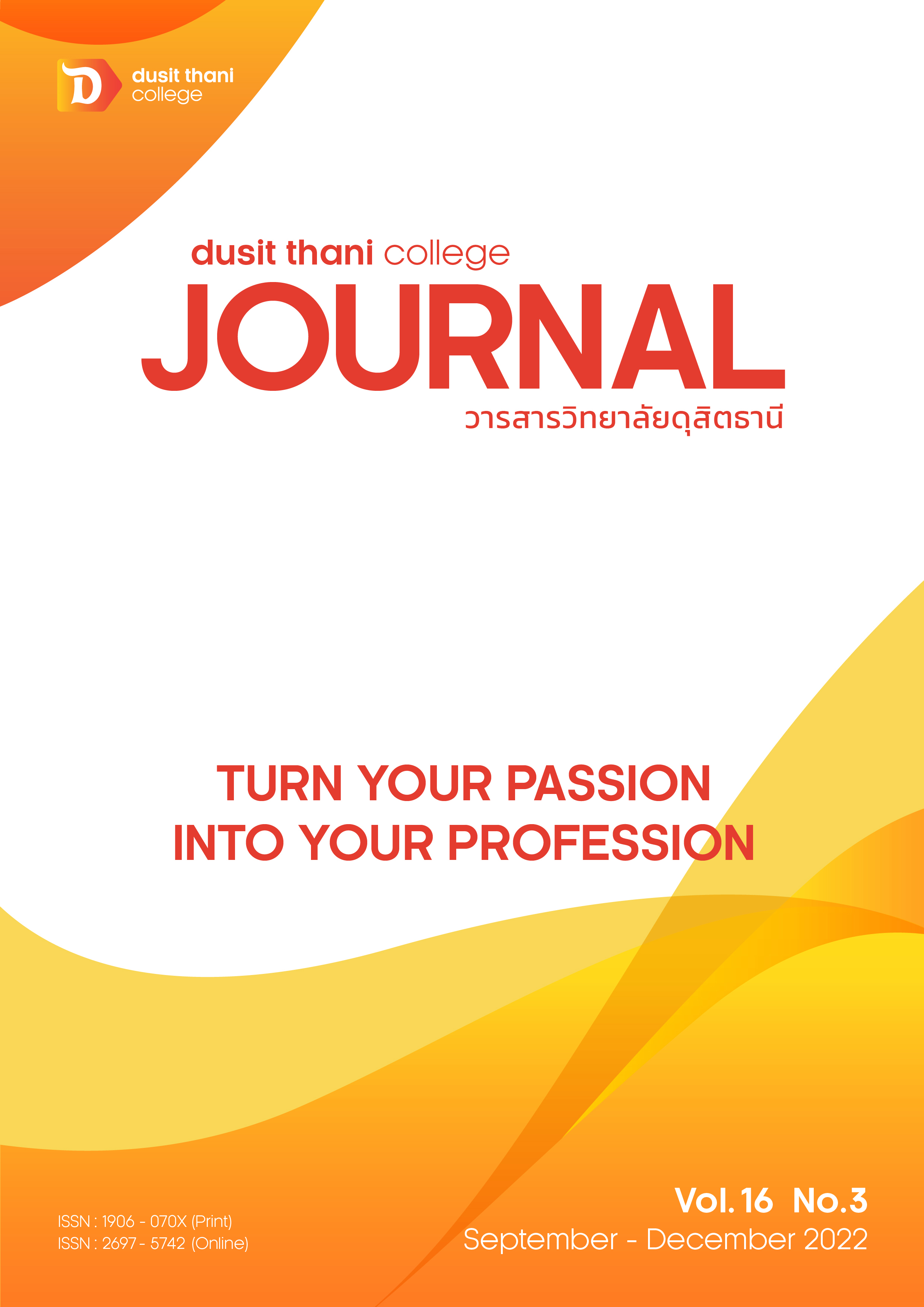Guideline for Wat Sai community development to be a self-reliant community enterprise.
Main Article Content
Abstract
The Wat Sai Rama 3 community is implemented in the form of grouping to deliver relationships and joint activities within the community. Products are created to generate income for the community. A study of the operating conditions of the Wat Sai community in terms of business-related operations found that the strengths of the community include. 1) the use of products that are beautiful and represent the uniqueness of Thailand. 2) Product appearance can attract customers. 3) The location of the business is close to the community. 4) Products were recommended form customer to other., and 5) The product contains a mixture of Thai herbs and a unique fragrance. The weakness of the community includes 1) The product is not widely known. It is sold only in the community. 2) The packaging is also outdated and unattractive. 3) The production site is located in a community area, causing production restrictions., and 4) There is not much available funding for newly developed products. The opportunities of community include 1) Selling within the community area, which is easy to market to the target audience. 2) The main raw materials are easy to procure and have a low cost. 3) The product is a daily-used item, resulting in consistent sales. and the threats of the community includes 1) products that are easy to imitate. 2) There are many competitors. 3) The formula of the product is not very different. 4) Lack of knowledge about market expansion, packaging preparation, and the use of online media. Proper income distribution model of community enterprises of Wat Sai Rama 3 community can be divided into 2 types as follows: 1) Products that people in the community have completed and then sold through the channel of the club will share the income proportion to the people in the community who are involved in the form of a proportion.; and 2) Products under development due to the lack of sales, there are still unclear revenue distribution patterns. However, it will focus on spreading the income to everyone involved.
Article Details

This work is licensed under a Creative Commons Attribution-NonCommercial-NoDerivatives 4.0 International License.
Article Screening Policy
- All research and academic articles to be published must be considered and screened by three peer reviews in the relevant field / article.
- All articles, texts, illustrations and tables published in the journal are the personal opinions of the authors. Editors don't always have to agree. And no responsibility whatsoever is the sole responsibility of the author.
- The articles to be published must never be published. Where did you first publish? And not in the consideration of other journals If the audit found that there has been a duplicate publication It is the sole responsibility of the author.
- Any article that the reader sees as being plagiarized or impersonated without reference. Or mislead the work of the author Please let the journal editor know it will be your greatest blessing.
References
Community Enterprise Promotion Division. (2019). Community Enterprise Promotion Guide. Bangkok: NEW THAMMADA PRESS (THAILAND) CO., LTD.
Community Development Department. (2016). Strategic Plan of the Department of Community Development 2017-2021. Bangkok: Planning Division, Department of Community Development.
Department of Agriculture Extension. (2019). Manual for community enterprise operations. Retrieved from: http://www.sceb.doae.go.th/Documents/SKC/wCE.pdf
Hazell, P., Poulton, C., Wiggins, S., & Dorward, A. (2010). The future of small farms: trajectories and policy priorities. World development, 38(10), 1349-1361.
Hugos, M. H. (2018). Essentials of supply chain management. John Wiley & Sons.
Watsai Temple Protection Club. (2014). A message from the heart of the people of Wat Sai. Retrieved from: http://www.watsai.com/data_13925
Sangayotin, S (2020). Potential Development of Community Enterprises in the Southern Border Provinces to enhance competitiveness. Report of Graduate School of Commerce (GSC), Burapha University.
Supradith, S & Pooripakdee, S. (2019). Operational Formats of Social Enterprise of BaanLaem Sak Community-based Tourism, Aow Luk, Krabi. Humanities, Social Sciences and arts. 12(5): 1571-1584


